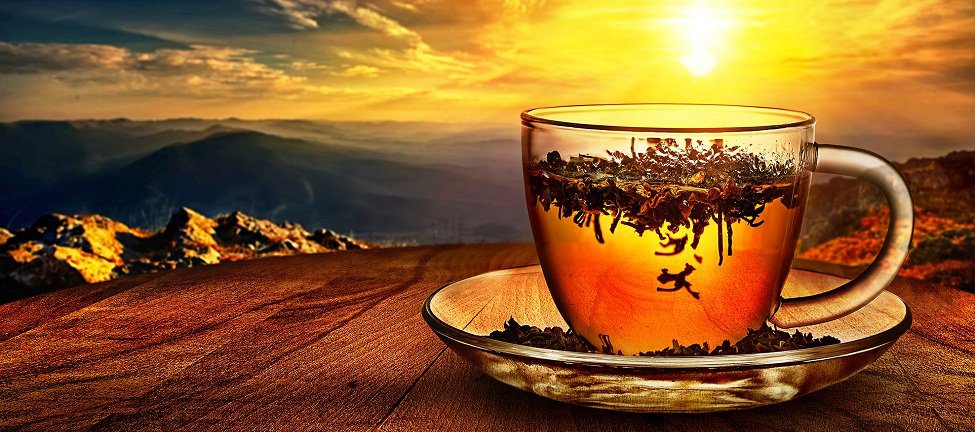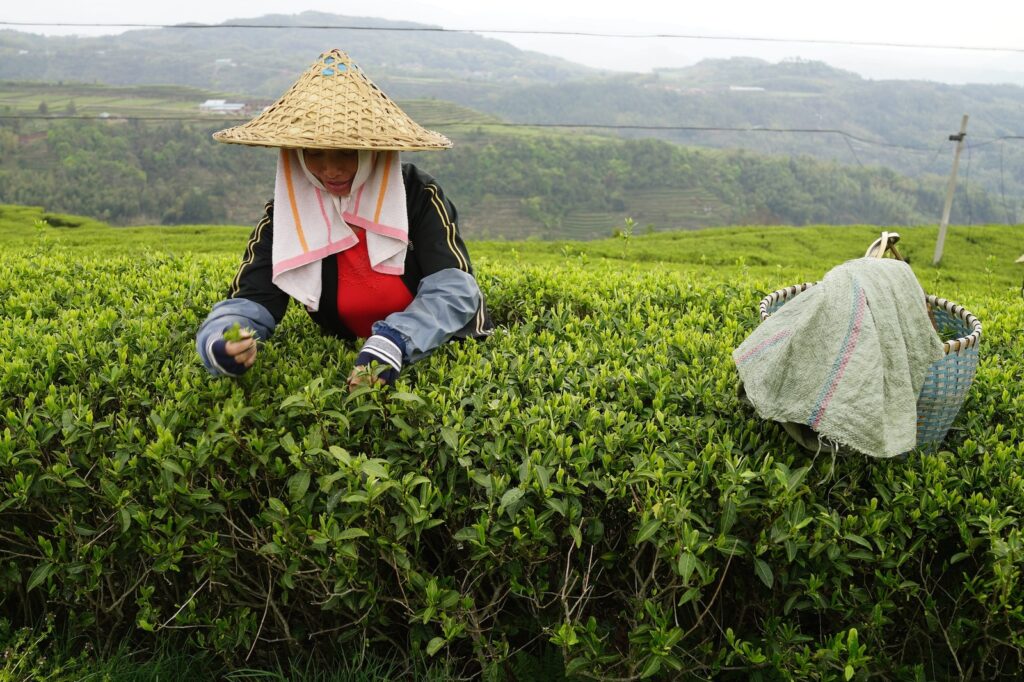India is known for the abundance of its products and perhaps the most popular of them is Indian tea. The climate and proper care have created ideal conditions for the magical tea plant to supply not only one country, but the whole world with a divine drink.
Its history began in the 19th century, when the British brought its first seeds to the state of Assam. The growing conditions were suitable, and a few years later, the world’s first tea company with the same name “Assam” appeared. Plantation owners began shipping Indian black tea to Britain. It is still the market leader to this day. Assam has a tart taste and a spicy aroma with honey notes. It perfectly invigorates and strengthens blood vessels, if you drink it in moderation.
Around the same time, in the 19th century, the seeds of the tea plant also came to Bengal, the Darjeeling district. The mountainous area in northeastern India on the border with Nepal, Bhutan and Tibet has become the birthplace of the eminent Indian variety “Darjeeling”. Workers on the plantation were recruited from Nepal, and, of course, the British were in charge of the business. In the 1970s, almost all the land was bought by the Indians. Until now, Indian tea is harvested by hand. For two centuries, the clothes have not changed either, the women pickers wear the same ethnic clothes.
The promotion of a healthy lifestyle in the last decade has sparked a new wave of interest in Darjeeling. Because of the nutmeg, refined and delicate taste, the drink is called “tea champagne”. Darjeeling invigorates, tones and improves digestion.
Sikkimese tea is new
In India, another young and unique species grows – Sikkimese tea. It appeared on the market only at the end of the 20th century, but quickly won the love of connoisseurs. The conditions of the highlands of the eastern Himalayas give Indian Sikkimese tea the sweet taste of Assam and the nutmeg aroma of Darjeeling. The first harvest of this Indian black tea of the year is considered the most valuable, refined, retaining a large amount of useful substances, and, accordingly, the most expensive and rare.
India is known for another variety – “nilgiri”. This Indian variety is not easy to buy: 1 kg of dried leaf costs about $600. Therefore, if in an ordinary Indian store you see a low price tag on a package of nilgiri, it is most likely mixed with cheaper varieties. It grows in southern India, where abundant rains allow tea to grow all year round. It has a mild and light taste, set off by hints of lemon aroma. The antioxidants found in nilgiri can have a therapeutic effect on the cardiovascular system.
Now a few words about the famous Indian masala chai. “Masala” is translated from Hindi as “spice”, that is, masala is tea with spices. Any black (preferably Indian) tea is taken as the basis, milk, sweetener, cardamom, cloves, ginger, black pepper, cinnamon, anise and other spices are added to it. In Asia, masala can be bought ready-made – the powder is poured with boiling water, it remains to add only milk and sugar to taste. However, the most delicious masala is the one prepared at home, with your own hands. This Indian tea warms, reduces fever during colds, satisfies hunger, and regulates blood pressure.

Real Ceylon tea
Very often, Ceylon tea is confused with Indian tea due to ignorance. Ceylon is the old name for the island of Sri Lanka. Tea from here ranks third in the world in terms of the number of exports to the world market. It, unlike the real Indian, is both black and green, while India is famous for its predominantly black varieties. The legendary Thomas Lipton, whose name has been around for many years, acquired most of the Sri Lankan plantations in the 1890s. He began to grow tea on them and sell it at the lowest price, which made him famous all over the world.
The variety of varieties of Ceylon tea creates some difficulty with its choice. However, do not be afraid, you need to understand. Variety “Nuwara Eliya” grows at an altitude of 2000 meters above sea level, has a mild and delicate taste. It is intolerant, contains the aroma of herbs that grow nearby. “Uda Pussellava” grows 200 meters lower than the previous one, has an average strength and slight astringency. Varieties “Dimbula”, “Uva”, “Kandim” and “Rukhuna” decrease by 200-500 meters, respectively, and the lower the level of the mountains, the stronger the drink. To feel their differences, you need to buy a 100% variety of one tea, refusing blends (blends).
Types of Indian tea
According to the method of mechanical processing of tea leaves, Indian tea can be divided into four types:
sheet. It happens large – and medium leaf
granular – these are crushed and twisted leaves in a special way
pressed. It is divided into brick and tile (tablet)
powder. This type of tea is packaged in bags.
It is believed that it is leaf Indian tea that retains the maximum amount of nutrients, keeps aroma and taste. Granular is brewed many times faster than others and is more economical. Pressed gets such a shape for convenient transportation over long distances with the preservation of aroma and taste. Powdered Indian tea is packaged in bags, it goes into mass market – the aroma and taste are significantly lost.
How to choose the perfect Indian tea
You can buy Indian tea both in India and abroad. A special marking on the packages indicates its quality. If you want to find the highest grade, look for the tops of the plant’s shoots and avoid “firewood powder”. That is, with impurities of branches or other varieties.
Six signs of original tea:
Smell. The drink should smell good even when dry.
Color. When brewed, tea looks according to its variety.
Humidity. Good tea is quite dry, but not overdried.
Appearance. The original tea leaves are always twisted, regardless of the size of the leaf.
Marking. Must be present on the package.
Storage. The ideal Indian tea should be fresh and not sit on the shelf for more than a few months.
Choosing your favorite Indian tea is like a science or an art. Try, experiment, comprehend this knowledge, and very soon the magic of this drink will give you its fruits.
A real Indian grandfather shares a recipe for real Indian tea. Masala with your own hands – a magical result is guaranteed!






